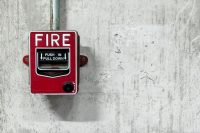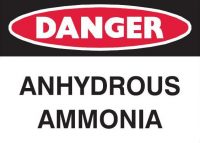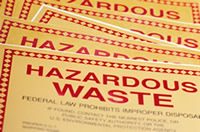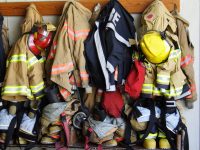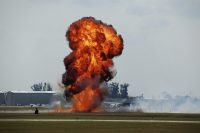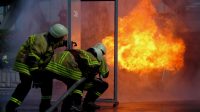Category: Emergency Preparedness and Response
No one wants it to happen, but an emergency, natural or manmade, can strike at anytime, 24/7. What’s more, it need not be a major, nationally-televised incident, such as a hurricane, earthquake, or act of political terror. An event as common as a local building fire can present just as large a challenge to you. These resources will help you create a plan for handling such crises, whatever their scope, and to carry it out in a way that best protects your employees and your company.
At 5:50 p.m. on May 9, 2015, a transformer exploded at the Indian Point nuclear power plant in Westchester, New York, 50 miles north of Manhattan. Sprinkler systems activated as emergency response crews scrambled, working to keep the fire from the nuclear installation just 200 yards away. The crews poured specially designed fire-fighting foam on […]
BMPs for Storing Anhydrous Ammonia Good Housekeeping Maintain good housekeeping practices. Ensure good housekeeping procedures are followed in the compressor/recycle rooms and in the immediate vicinity of the evaporators. Accumulated supplies, equipment, and debris delay detection of equipment damage or ammonia leaks. Maintain complete and accurate piping and instrumentation diagrams (P&IDs) of the ammonia refrigeration […]
Anhydrous ammonia is ammonia gas—the anhydrous part means “without water.” It is colorless, but has a very pungent smell. It can be irritating at lower levels, but very damaging at higher levels. Exposure to anhydrous ammonia between 5 and 50 parts per million (ppm) can cause headaches, loss of the sense of smell, nausea, and […]
The CAA’s Chemical Accident Prevention Program requires that any facility that has listed substances above threshold quantities in any single process prepare a Risk Management Plan (RMP). The listed substances contain 77 toxic chemicals with thresholds ranging from 500 pounds (lb) to 20,000 lb and 63 flammable substances with a threshold quantity of 10,000 lb. […]
After a large-scale disaster, workers often work longer shifts and more consecutive shifts than they would typically work. The fatigue and stress that may arise from strenuous work schedules can be compounded by the physical and environmental conditions in the affected area after a disaster: nonexistent, damaged, or limited critical infrastructure (roads/traffic signals, utility lines, […]
Emergency workers who deploy to work at disaster sites caused by weather, earthquakes, epidemics, and other catastrophic events often put in much longer than 8-hour shifts. Although workers in these fields are generally highly committed to their jobs and find the jobs rewarding in ways that make long hours seem bearable, they are at substantially […]
Every time a facility explodes, we look for ways it could have been prevented. Well, in the wake of a refinery explosion in Richmond, California, Cal/OSHA has proposed strict process safety measures at oil refineries. We are taking a look at Cal/OSHA’s proposal because it has been suggested that other states follow California’s lead. The […]
The EPA claims that there are sufficient regulatory reasons for TSDFs to be in contact with local authorities concerning emergency procedures. The Agency points to 40 CFR 264.30 to 264.37 and 40 CFR 265.30 to 265.37, the requirements that TSDFs develop preparedness and prevention plans, and specifically 40 CFR 264.37 and 40 CFR 265.37, where […]
Each year, fire erupts at some 70,000 U.S. workplaces, killing 200 employees, injuring thousands, and causing billions of dollars in property damage. Most workplace fires are the result of human behavior rather than equipment failure, which means they can be prevented with a proactive program reinforced by training. Yesterday, we looked at the major causes […]
It was around 4 a.m. on Saturday, March 7, when the AMF bowling alley in Huntsville, Alabama, caught fire. As a cloud of smoke spread over the sleeping city, firefighters entered the building to fight the blaze, which is believed to have started in the bowling alley’s kitchen. While the firefighters moved through the building, […]

